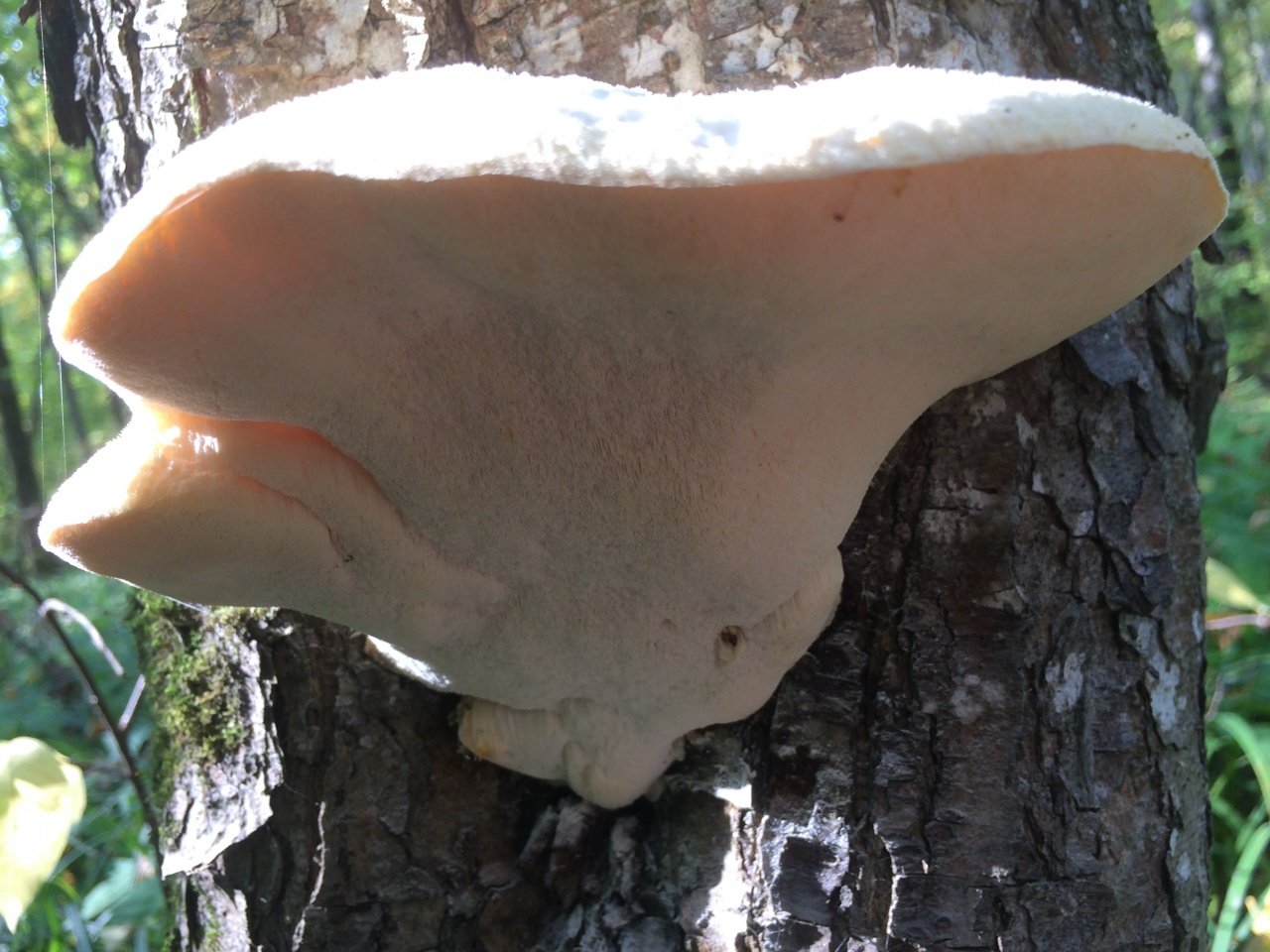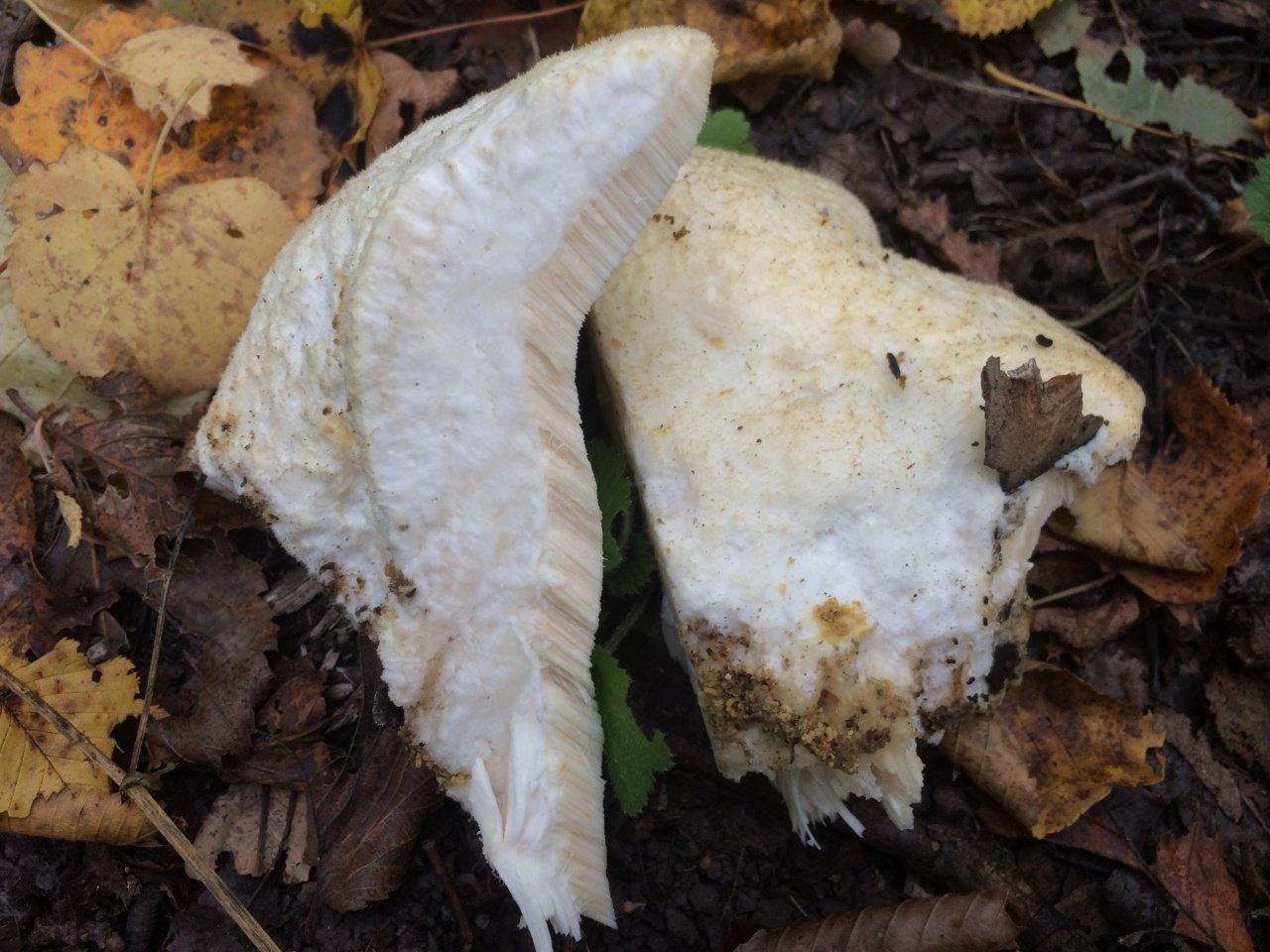Tiromyces snow-white (Tyromyces chioneus)
- Division: Basidiomycota (Basidiomycetes)
- Subdivision: Agaricomycotina (Agaricomycetes)
- Class: Agaricomycetes (Agaricomycetes)
- Subclass: Incertae sedis (of uncertain position)
- Order: Polyporales (Polypore)
- Family: Polyporaceae (Polyporaceae)
- Genus: Tyromyces
- Type: Tyromyces chioneus (Tyromyces snow-white)
:
- Polyporus chioneus
- Bjerkandera chionea
- Leptoporus chioneus
- Polystictus chioneus
- Ungularia chionea
- Leptoporus albellus subsp. chioneus
- White mushroom
- Polyporus albellus

fruit bodies annual, in the form of convex sessile caps of triangular section, single or fused with each other, semicircular or kidney-shaped, up to 12 cm long and up to 8 cm wide, with a sharp, sometimes slightly wavy edge; initially white or whitish, later yellowish or brownish, often with dark dots; the surface is initially softly velvety, later naked, in old age covered with wrinkled skin. Sometimes there are completely prostrate forms.
Hymenophore tubular, white, slightly yellowing with age and upon drying, practically does not change color in places of damage. Tubules up to 8 mm long, pores from round or angular to elongated and even labyrinthine, thin-walled, 3-5 per mm.
spore print white.

Pulp white, soft, dense, fleshy and watery when fresh, hard, slightly fibrous and brittle when dried, fragrant (sometimes there is a not very pleasant sour-sweet smell), without a pronounced taste or with a slight bitterness.
Microscopic signs:
Spores 4-5 x 1.5-2 µm, smooth, cylindrical or allantoid (slightly curved, sausage-shaped), non-amyloid, hyaline in KOH. Cystids are absent, but spindle-shaped cystidiols are present. The hyphal system is dimitic.
Chemical reactions:
The reaction with KOH on the surface of the cap and fabric is negative.
Saprophyte, grows on dead hardwood (most often on dead wood), occasionally on conifers, singly or in small groups. It is especially common on birch. Causes white rot. Widely distributed in the northern temperate zone.
Mushroom inedible.
Snow-white thyromyces is externally similar to other white thyromycetoid tinder fungi, primarily to white representatives of the genera Tyromyces and Postia (Oligoporus). The latter cause brown rot of wood, not white. It is distinguished by thick, triangular-section caps, and in the dried state by yellowish skin and very hard tissue – and by microscopic signs.
Photo: Leonid.









